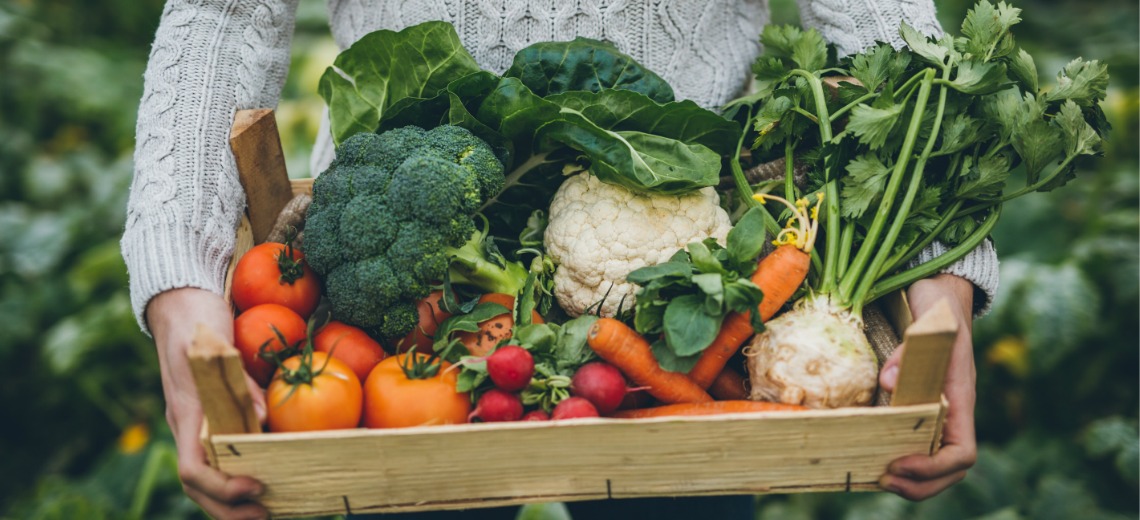Top 10 Reasons to Eat Your Vegetables
1.Reduce your risk for heart disease, including heart attack and stroke.
2.Helps protect against certain types of cancers.
3.Can help lower cholesterol.
4.Reduce the risk and symptoms of digestive disorders.
5.Most vegetables are low in calories, which means you can eat a lot of them!
6.The high fiber in vegetables help you feel full longer.
7.Potassium-rich vegetables helps lower blood pressure. Vegetable sources of potassium include spinach, lentils, kidney beans, lima beans, soybeans, beet greens and tomato products (paste, sauce and juice).
8.Vitamin C-rich vegetables helps heal cuts and wounds and keeps teeth and gums healthy. Vegetable sources of vitamin C include tomatoes, sweet peppers, spinach, summer squash, cauliflower, broccoli, cabbage and Brussels sprouts.
9.Vitamin A-rich vegetables keeps eyes and skin healthy and helps protect against infections. Vegetable sources of Vitamin A include carrots, sweet potatoes, collard greens, leaf lettuce, spinach and tomatoes.
10.Quick and easy to prepare and eat.
Tips on How to Get More Veggies in Your Diet
- Keep vegs where you can see them, you’ll be more likely to eat them.
- Wash, cut up and store vegs in small zip lock bags for an easy and fast snack.
Variety is the spice of life – try different colors and varieties of vegetables, whether they are fresh, frozen or canned.
- When trying new vegetables, you may need to eat them 10 or more times until your taste buds get used to the new taste.
- Keep your favorite frozen vegetables stocked so you always have a vegetable to add to a meal.
- Dip veggies in nut butters, hummus or Greek yogurt based dips (use plain Greek yogurt and ranch seasoning mix).
- Snack on Edamame (soy beans).
- Order your burger or chicken sandwich in a lettuce wrap.
Try different methods of preparing vegetables.
Some prefer veggies raw and crunchy, others may enjoy them well cooked and soft, or lightly cooked.
- Sautee vegetables in a small amount of olive oil and add your favorite spices, herbs and/or seasonings.
- Cook vegetables in the microwave oven. Place them in a microwave safe dish and cover. Cook for 2 mins or longer, depending on the type of vegetable and desired texture.
- Grill vegetables in a grill basket.
- Roast vegetables in the oven. Toss them in olive oil and your favorite spices, herbs and/or seasonings. Spread them in a single layer on a baking sheet and bake at 400°F for 10-30 mins, depending on the vegetable and desired texture.
- You can also sprinkle small amounts of parmesan cheese on the vegetables before baking them.
- Try making kale chips: wash kale leaves and dry well with a kitchen towel or paper towels. Tear off thick center vein and tear leaves into smaller, bite sized pieces. Toss with olive oil to lightly coat the leaves. Spread on a single layer on a baking sheet, and sprinkle lightly with salt. Bake in 350°F for 12-14 mins until leaves are crisp but not browned.
- Try pureed cauliflower instead of mashed potatoes for a lower carb side dish.
- Steam or microwave cauliflower until soft, and mash with a fork or food processor.
- Add a small amount of salt and butter or olive oil to taste. For a bolder flavor add crumbled blue cheese or goat cheese.
- Replace rice with cauliflower or broccoli rice.
- Replace spaghetti with zucchini noodles or spaghetti squash.
- Have beans as a main protein source for a meal. They are wonderful in chilies, soups, and added to salads. Beans are also a good source of fiber which can help relieve constipation. If you are not used to eating beans regularly, start with small amounts daily and slowly increase the portion size. This way your body has time to get used to digesting them and you can minimize gastric discomfort that some people experience after eating beans. Remember to drink plenty of fluids with foods high in fiber!
Dieticians Are Part of Your Team
At Figure Weight Loss professional dieticians are a part of your team. Here are healthy recipes prepared by our dieticians at FWL.
Together We Can!
